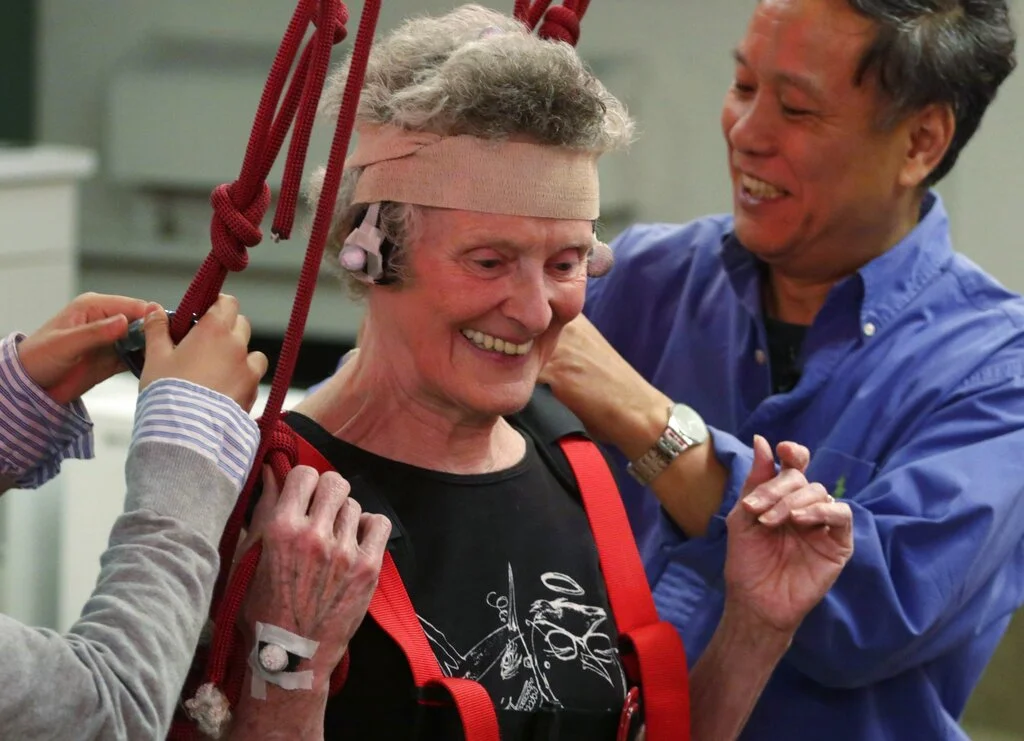Wisconsin News
Falls made up 21 percent of EMS calls in Wisconsin last year, state health agency reports

About 1 in 5 calls to emergency medical services in Wisconsin are for injuries from falls, according to a new report by the state’s Department of Health Services.
Falling might be something that many older people fear, but it isn’t inevitable, said Suzanne Morley, health promotion program coordinator at the Wisconsin Institute for Healthy Aging.
“Falls are common, but they’re not a normal part of growing older,” Morley told WPR’s “Wisconsin Today.” “We hear a lot from older adults that they think falls are inevitable as we age. But knowing there’s so many different things that we can do as individuals, communities and systems to prevent those falls.”
While CDC data suggests Wisconsin has more fall-related deaths than any other state in the country, Morley said the reason for that is still unclear.
“Often we get the questions, ‘Is it because of the snow and ice in the winter? Is it due to Wisconsin’s drinking culture?’” Morley said. “We have done some digging into the data on alcohol-related falls, and while those numbers are increasing, that doesn’t seem to be the root of the issue. The snow and ice is definitely a concern in the winter, but other states have snow and ice and don’t have as many falls.”
While some might not think a fall is an emergency, Morley said falls can be life-altering, especially for older people. Will Koehne, epidemiologist for the Wisconsin DHS, told “Wisconsin Today” that the data shows most falls happen at home.
“Year over year, most of the EMS responses to falls are to private residences,” Koehne said. “I hope that this will encourage providers to talk to older adults about falls even before they’re at risk for falling.”
Morley offered listeners strategies and tips on fall prevention that have proven successful in the Falls Free Wisconsin Coalition and the Stepping On falls prevention program.
The following was edited for clarity and brevity.
Rob Ferrett: When you work with Wisconsin seniors and their families, what are some of the first steps people could take to make their homes more safe?
Suzanne Morley: In our Stepping On falls prevention program, we have a big focus on home safety. On our Falls Free Wisconsin website, we have an interactive home safety challenge where you can go through a real Wisconsin home, identify different hazards and fall prevention steps that you can take.
But it’s also about looking at the way you do things. Maybe you can slow down a little bit as you’re walking throughout your home. But then you can also do things like installing grab bars, putting more lighting in your home, removing those slippery rugs and mats, installing night lights and taking a look at your medications to see if side effects might be making you more dizzy or unstable.
RF: If someone has a serious fall and their care is delayed, that has the potential to worsen their outcome or recovery. Are there preventative steps for seniors who live alone?
SM: We recommend older adults always carry a cell phone with them, even if they’re just walking to the bathroom or going outside for a minute. Also, getting a medical alert button to wear around your neck is helpful.
They could even have a check-in process with a neighbor or a family member. I’ve heard of situations where, if an older neighbor doesn’t open their drapes by a certain time, someone nearby will go over and check on them. You could also have a scheduled phone call or a text every single day with someone, so that you have that accountability.
And while of course we want to prevent falls, we also recommend practicing how to get up from a fall. There’s some resources on our website on how to do that. But things like grab bars in your home will hopefully prevent a fall from happening in the first place.
RF: How do you spread fall-prevention awareness outside of a health care setting?
SM: After a fall, sometimes people don’t want to go to the emergency department. Maybe they’re not injured, or it’s a cost-related thing. But we encourage a follow-up with a health care provider, just so they can look at different things like medications or maybe a referral to physical therapy.
But if they’re not being seen or sharing with their provider their history of falls or fear of falling, there’s a lot of great community-based organizations throughout the state. I would recommend starting with your Aging and Disability Resource Center. Oftentimes they host fall prevention programs, events and exercise classes. They’re a great community resource available throughout the state.
RF: I know a lot of senior living facilities and senior centers do things like balance training classes for seniors. Does that make a difference in preventing falls?
SM: Definitely. The balance and strength component of it is super important, just as home safety modifications and medication management are.
The difference is really amazing to see. In our seven-week Stepping On program, we practice balance and strength exercises every week. By week three people are noticing an improvement by practicing a few simple balance and strength exercises every other day.
Wisconsin Public Radio, © Copyright 2025, Board of Regents of the University of Wisconsin System and Wisconsin Educational Communications Board.


